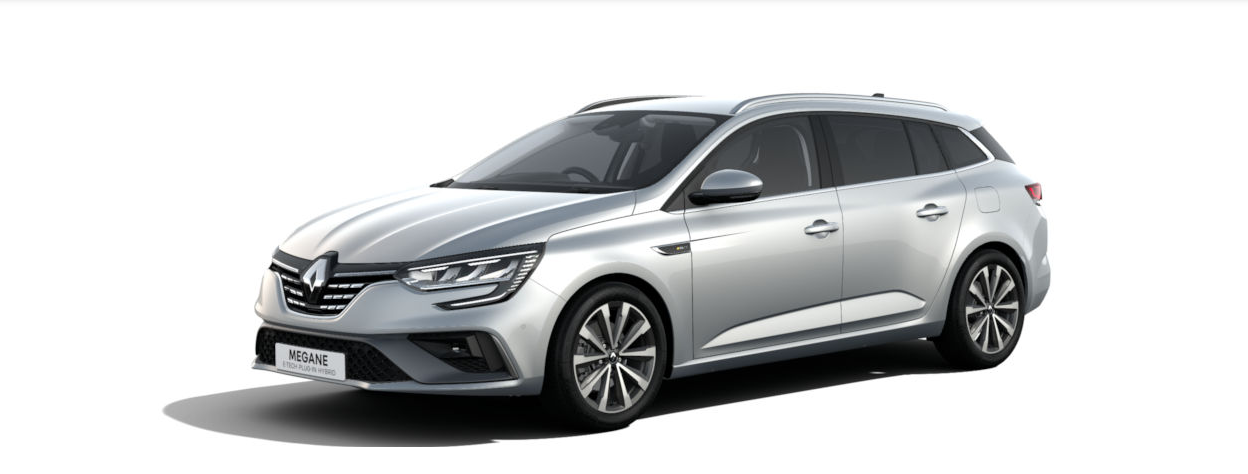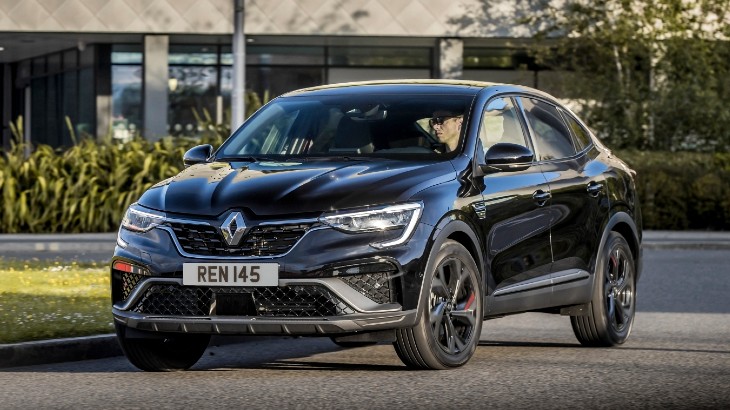Groupe Renault is one of the oldest manufacturers still in operation, and with the range of Renault hybrid cars and electric cars on the market, they remain one of the most influential in the industry. A key member of the Renault-Nissan-Mitsubishi Alliance – which sees cross-sharing of technologies and innovation between all parties – as well as a controlling stake in budget brand Dacia further emphasises their reach.
Being at the forefront of the industry has led to various innovations which are now commonplace on vehicles today, including disc brakes, central locking and the start/stop ignition button.

A brief history of Renault
It’s hard to be brief with a company which has been producing cars since 1898, but Renault was formed by Louis Renault and his brothers Marcel and Fernand following the sale of their first car, the Renault Voiturette 1CV.
In 1903, Renault began to manufacture its own engines with their first volume sale being for the Renault AG1 for use as a taxi fleet. By 1907, a significant percentage of London and Paris taxis were Renault. By 1914, with the outbreak of World War I, these same taxis were used to transport 4,000 men to the front. By the end of the second World War, Renault was nationalised as Régie Nationale des Usines Renault (RNUR), wholly owned by the French State.
While the brand had always identified racing as a great promotional tool, in 1956 Renault’s Etoile Filante broke four speed records thanks to its 270hp turbine engine. This achievement helped to establish Renault’s reputation as a pioneer across the globe and led to the eventual formation of Renault Sport in 1975. From there, Renault revolutionized the world of Formula 1 in 1977 by equipping the RS01 car with a turbocharged engine. This innovation peaked in 1992 with Williams-Renault becoming world champions thanks to Nigel Mansell’s 5 pole positions, 10 victories including 6 doubles on the 16 races. Williams-Renault were then defending champions for six consecutive years.
Renault became a PLC with state capital in 1996, allowing the purchase of Dacia, creation of Renault Samsung Motors and signature of the Renault-Nissan Alliance in 1999.
Throughout all those decades up to the present day, Renault’s most recognised models such as the Renault 5 and Clio have been produced. Innovation remains a key point for the brand, with Renault hybrid cars being one of the best on the market and the all-electric Renault Zoe being one of the first EVs to market in 2012.
Renault Clio E-Tech hybrid

Arguably Renault’s most iconic brand, thanks in part to Nicole and Papa in the 90s, the Clio is a supermini that has become a staple of UK roads since its launch in 1990.
As Renault’s best-selling model, the E-Tech hybrid version looks to future proof that success to ensure Renault hybrid cars are at the forefront of the industry. While the car’s styling is generic, its interior quality verges on upmarket with a host of high-end soft-touch materials throughout. The dashboard is clean and compact too, with a 9.3in portrait touchscreen taking pride of place above the centre console. A digital screen replaces traditional analogue dials too and driver displays can be used to customise the driving experience in a highly intuitive manner.
All of this plays into the unique perks the hybrid model offers. With its new E-Tech hybrid engine pairing a 1.6 petrol engine with two electric motors, the Clio E-Tech hybrid delivers unprecedented driving pleasure and optimal fuel efficiency, delivering just over 64mpg and 140hp.
Three versions of the Clio E-Tech hybrid are available:

S Edition

R.S Line
Renault Captur E-Tech hybrid

The Clio’s bigger brother, the Renault Captur offers drivers an SUV with added personality.
Described by the brand as more modern, more muscular and more expressive, the Captur has grown over the previous models. While its exterior styling may be en vogue at the moment, like the Clio a lot of the emphasis is placed on the interior. It features a similar portrait infotainment system which is angled slightly towards the driver for ease of use.
Available in both hybrid and plug-in hybrid versions, each engine choice offers its own unique perks. The petrol engine of Captur E-Tech hybrid is coupled with two electric motors and a small battery resulting in an achievable 56.6 mpg, using recovered energy from braking phases as the main source of power for charging the batteries.
The plug-in hybrid variant of the Captur essentially uses the same technology as the regular hybrid, however it has a bigger battery which can be recharged manually to allow more miles to be covered in pure electric drive.
The battery featured in the plug-in model allows you to drive up to 30 miles in pure electric mode, which proves ideal for small commutes and the school run to ensure Renault hybrid cars are competitive. This can be recharged at home and will take either over four hours using a traditional mains socket or three hours using a 7.4 kW wallbox.
Three versions of the Captur E-Tech hybrid are available:
S Edition

R.S Line
Renault Megane E-Tech hybrid

The Renault Megane range offers something for everyone, whether it’s the plug-in exclusive hatchback and Sport Tourer or the hot hatch R.S.
Whichever model you choose – whether it’s the chiseled features of the hatchback, sleek silhouette of the Sport Tourer, or the sporty chassis of the R.S – you’re getting access to a great all-rounder which can offer its own unique touch.
The E-Tech plug-in hybrid technology available across the range is informed by the Renault F1 team’s endeavors and combines two electric engines and one 1.6-litre petrol engine. In electric mode, you have up to 30 miles of driving range which reduces fuel consumption and CO2 emissions by up to 70 percent to ensure it’s one of the best Renault hybrid cars. The electric motors can be recharged in just three hours using a 7.4 kW wallbox or public charge point.
With 160hp on tap, and a 0-62 of between 9.4 and 9.8 secs depending on the spec, the plug-in hybrid version offer ease of use and adaptability to your needs with multi-sense technology enabling you to choose between 100% Pure electric mode, or My Sense and Sport modes depending on the type of performance you want and need from the car.
If you’ve got more sporty ideas in mind, the high performance R.S blows those figures out of the water, with its 1.8l engine offering 300hp and a 0-62 in just 5.7secs. With its sports chassis, Sport and Race drive modes, and 4-wheel steering, it provides optimum road holding and grip to combine comfort and high performance for sporty driving every day.
An all-electric version of the Megane is due to be released next year, promising a range of 280 miles.
Two model variants are available across the hatchback and Sport Tourer Megane E-Tech range, as well as the hot hatch R.S range:
Iconic hatchback

R.S Line hatchback
Iconic Sport Tourer

R.S Line Sport Tourer

R.S Trophy
Renault Arkana E-Tech hybrid

The Arkana is one of the latest Renault hybrid cars added to the range. Not only is it the brand’s first purpose-built hybrid but their first-ever SUV with sleek coupe-inspired styling.
Powered exclusively by electrified powertrains – an advanced E-Tech hybrid or an efficient new TCe 140 mild-hybrid – with both powertrains exclusively using smooth and responsive automatic transmissions for a refined and dynamic driving experience.
While Arkana boasts a striking athletic exterior, inside the practical, high-quality interior includes the very latest technology features as well as a practical 513-litres of boot space.
Similar to the Megane, a simple range line-up is offered with Iconic, S Edition and R.S. Line specifications to choose from, with both powertrain options available for each.
Three versions of the Arkana E-Tech hybrid are available:

S Edition

R.S Line
Renault Zoe E-Tech electric

The all-electric Renault Zoe has the benefit of being one of the first mass-market electric cars available to market, with the first-gen model released in 2012.
It’s safe to say the electric car has changed significantly since then, with nearly a decade of advances in EV tech helping the Zoe double its range and shorten its charge time. Furthermore, with its modern and dynamic design, bold curves, and sleek lines it works to normalise electric cars by blending in with the rest of the Renault range.
Named Best Small Electric Car for Value 2021 by What Car?, it offers a 52 kWh capacity allowing you to drive up to 245 miles making it ideal for daily commutes and long trips alike. You can get even more out of the electric range thanks to B-Mode regenerative braking which allows for single pedal driving.
At home, the Zoe will charge from 0-100% in just over nine hours from a 7kW wall box. This is radically shortened to just over one hour when using a 50kW DC rapid charger, and two hours using a 22kW public charge point.
Three variants make up the Renault Zoe all-electric range:

GT Edition
 Special Offers
Special Offers

 30th November 2021
30th November 2021  8 min read
8 min read 


